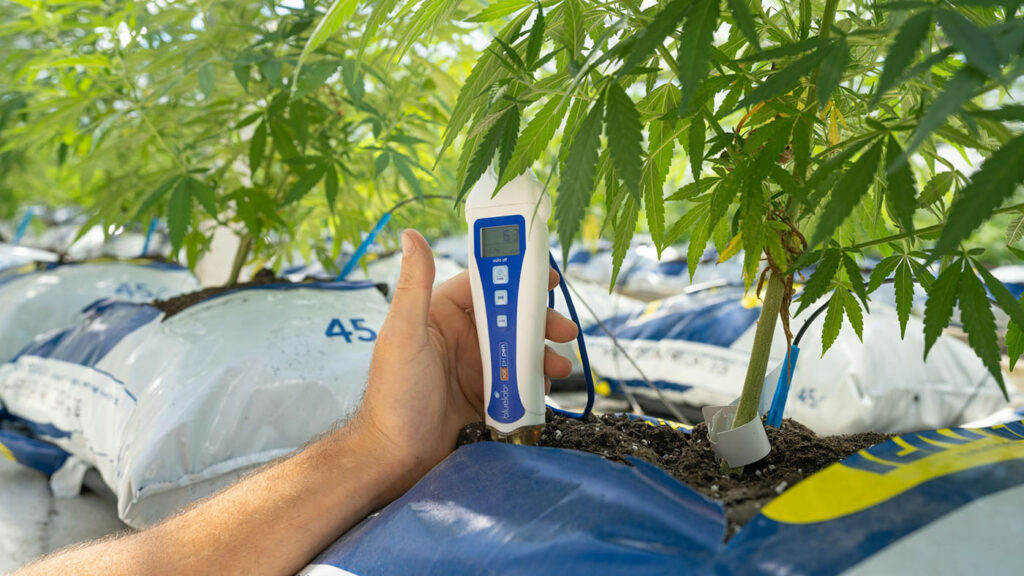Estimated reading time: 6 minutes
Table of contents
- Understanding Different Types of Cultivation Equipment
- Advanced Cultivation Tools and Equipment
- Final Thoughts
- Additional Resources
- Consulting Services For Cannabis, Hemp, Psilocybin, and Natural Medicine
- Testimonials and Public Relations
- Latest Articles
- Explore Our Articles
- Free Ebook – Start Your Own Legal Cannabis Business
The cannabis industry is one of the fastest-growing markets globally, driven by increasing legalization and consumer demand for premium-quality products. However, with growth comes competition, making cultivation equipment and efficiency, consistency, and compliance key drivers for success.
Cannabis cultivation equipment forms the backbone of any growing operation, whether small-scale craft or industrial production. The right tools streamline processes, optimize plant health, and maximize yield, ensuring your operation stays competitive in a rapidly evolving landscape.
This article explores the essential components of cultivation equipment, strategies for their effective integration, and practical tips for growers seeking to enhance their operations.
Understanding Different Types of Cultivation Equipment
Lighting Systems
Lighting is one of the most critical aspects in cultivation equipment. Since cannabis is photoperiodic, light exposure directly influences growth phases, including vegetative and flowering stages.
Key Lighting Options
LED Lights:
Known for energy efficiency, LED lights offer full-spectrum lighting that can be fine-tuned for different growth phases. Advanced LED systems often come with app controls, allowing growers to simulate natural daylight conditions and optimize plant health.High-Pressure Sodium (HPS):
HPS lights produce an intense, warm light that’s particularly effective during flowering. Although less energy-efficient than LEDs, their ability to penetrate dense canopies makes them ideal for large-scale grows.Compact Fluorescent Lights (CFL):
These are affordable and suitable for hobbyists or small-scale operations. However, their limited intensity makes them less effective for professional growers aiming for high yields.
Why LED Lights Are Preferred
The shift toward LEDs is driven by their efficiency and adaptability. For example:
- Cost Savings: While the initial investment is higher, LEDs consume less electricity and generate less heat, reducing energy and cooling costs.
- Sustainability: LEDs align with the growing emphasis on environmentally friendly cultivation equipment & practices.
- Customizable Spectrum: Advanced models allow growers to switch between vegetative and flowering light spectrums without changing fixtures.
Irrigation Systems
Irrigation systems are vital for maintaining consistent moisture and nutrient levels, directly impacting plant growth and yield quality.
Common Irrigation Systems
- Drip Irrigation: Drip systems provide precise water delivery to the root zone, minimizing waste and preventing overwatering. This system is ideal for both soil-based and hydroponic setups.
- Flood-and-Drain Systems: Common in hydroponics, these systems periodically flood the grow tray with nutrient-rich water and then drain it back into a reservoir.
Advantages of Drip Irrigation
Drip systems are a top choice for commercial cultivators due to:
- Reduced Resource Usage: Minimal water waste and nutrient loss.
- Scalability: Easily expanded as operations grow.
- Automation Potential: Timers and sensors can be integrated to automate irrigation schedules, reducing manual labor.
Best Practices for Integration
- Regularly clean and inspect emitters to prevent clogging.
- Monitor nutrient solution pH and EC (electrical conductivity) levels for consistency.
- Pair with moisture sensors to ensure plants receive optimal hydration without risking root rot.
Ventilation Systems
Proper airflow is essential for plant health, pest prevention, and climate control. Cannabis plants thrive in environments with consistent temperature and humidity levels, both of which are influenced by ventilation.
Components of a Comprehensive Ventilation System
- Exhaust Fans:
These remove hot air and maintain a fresh air exchange, which is crucial for preventing heat stress and mold development. - Carbon Filters:
Carbon filters trap odor molecules, making them indispensable for odor control in indoor operations. - Oscillating Fans:
Create uniform airflow, strengthening plant stems and preventing stagnant air pockets. - HVAC Systems:
These provide precise control over temperature, humidity, and air quality, making them ideal for large-scale operations.
Tips for Ventilation Optimization
- Position oscillating fans at canopy level to avoid windburn.
- Regularly replace carbon filter media to maintain effectiveness.
- Use automated controls to monitor and adjust environmental parameters in real-time.
Advanced Cultivation Tools and Equipment
Temperature Control Systems
Cannabis plants are highly sensitive to temperature fluctuations. Ideal conditions range from 70°F–85°F (21°C–29°C) during the day and slightly cooler at night.
Tools for Temperature Management
- Air Conditioners: Essential for cooling indoor grow rooms during summer months.
- Dehumidifiers: Critical cultivation equipment for controlling humidity, especially during the flowering phase to prevent mold.
- Heat Mats: Useful for germination and early growth stages in colder climates.
Growing Mediums
Selecting the right growing medium impacts root health, water retention, and nutrient availability.
Popular Options
- Soil:
Organic soil enriched with compost provides a natural growing environment but requires careful monitoring of pH and nutrient levels. - Coco Coir:
Made from coconut husks, coco coir is a sustainable alternative with excellent water retention and aeration properties. - Hydroponics:
This soilless method involves growing plants in nutrient-rich water. It accelerates growth and yields but requires precise monitoring of pH and nutrient concentrations.
Considerations for Medium Selection
- Match the medium to your cultivation method, equipment, and operational scale.
- Regularly test pH levels to ensure optimal nutrient uptake.
Nutrients and Fertilizers
Proper nutrition is fundamental for plant health and maximizing yields.
Macronutrients and Micronutrients
- Macronutrients: Nitrogen, phosphorus, and potassium are the primary drivers of plant growth.
- Micronutrients: Elements like zinc, iron, and magnesium support enzyme functions and photosynthesis.
Organic vs. Synthetic Fertilizers
- Organic Fertilizers: Provide a slow, steady nutrient release, improving soil health over time.
- Synthetic Fertilizers: Deliver immediate results and are ideal for hydroponics where organic matter isn’t present.
Timing Machines
Investing in cultivation equipment that employs automation simplifies operations by ensuring plants receive consistent care. Timing machines control lighting, irrigation, and feeding schedules, reducing human error and labor costs.
Final Thoughts
Investing in high-quality cultivation equipment is crucial for success in the cannabis industry. Beyond selecting the right tools, growers must integrate them seamlessly into their operations and continually optimize performance. By focusing on precision, sustainability, and automation, cannabis cultivators can achieve consistent quality and maximize profitability.
For expert assistance in cultivation equipment selection, integration, and operational optimization, Catalyst BC offers comprehensive solutions tailored to your needs. Contact us today to elevate your cannabis cultivation.
Additional Resources
Consulting Services For Cannabis, Hemp, Psilocybin, and Natural Medicine
- Consulting Services Overview
- Business Strategy
- Financial Planning
- Cannabis, Hemp, Psilocybin, & Natural Medicine Licensing and Applications
- Facility Design
- StartUp Support
- Genetic Development
- Business Turnaround
- Operational Optimization
- Vertical Farming
- Controlled Environmental Agriculture (CEA)
- State and Country Services Directory
- Blog
- Home
Testimonials and Public Relations
Latest Articles
- Cannabis 280E Compliance and COGS Optimization Expert StrategiesThe cannabis industry operates under a unique federal tax burden imposed by Internal Revenue Code (IRC) §280E. While state legalization has flourished, this provision, which denies deductions for ordinary business expenses of trades dealing in controlled substances, remains the single greatest threat to cannabis profitability.
- Owner’s Rep for Cannabis Dispensary Buildout: Expert Compliance & Project ManagementNavigating the highly-regulated world of a cannabis dispensary buildout requires specialized expertise beyond standard construction. The complexity of securing a final operating license, controlling costs, and preventing opening delays for a cannabis dispensary hinges on professional guidance. This is why securing an experienced Owner’s Rep for Cannabis Dispensary Buildout is a critical first step.
- The Indispensable Owner’s Rep for Cannabis Cultivation Facility Buildout: Expert Project Management to Prevent Cost OverrunsIn this high-stakes arena, the Owner’s Rep for Cannabis Cultivation Facility buildout is the crucial strategic partner. They are the expert professional who ensures the owner’s vision is translated into a successful, operational, and profitable reality.
- Cannabis Dispensary Compliance: Training, Inventory & ProfitabilityIn today’s regulated cannabis market, cannabis dispensary compliance is not optional—it is the foundation of a sustainable and profitable retail business. Every dispensary, from boutique shops to multi-state operators, must follow strict dispensary regulatory compliance standards, maintain accurate cannabis inventory management systems, and invest in ongoing cannabis dispensary training programs.
- Beyond Compliance: Implementing a Cannabis Dispensary Secret Shopper ProgramAs a cannabis retail owner, you operate in a high-stakes environment where federal prohibition meets state-regulated commerce. Your retail floor is not just a sales hub—it’s a constant target for mandatory inspection and the front line for brand differentiation. The most critical tool for navigating this complex reality is the professional, recurring Cannabis Secret Shopper program.
- Architects of the Cannabis Industry: What Defines An Expert Canna Consultant?An expert Canna Consultant is the strategic architect and operational engineer of a cannabis venture. They are specialized cannabis industry consultants who translate ambiguous legislation into profitable business processes.
Explore Our Articles
cannabis applications Cannabis Bar Cannabis Business Optmization cannabis careers Cannabis Compliance Cannabis Consumption Cannabis Consumption Bar Cannabis Inventory Management Systems Cannabis Investors cannabis jobs Cannabis Legalization cannabis licensing Cannabis Lounge cannabis marketing Cannabis Operational Procedures cannabis outreach Cannabis Regulations Cannabis Security Cannabis Software Cannabis Startup Cannabis Supply Chain Cannabis Technology Colorado controlled environment agriculture Cultivation cultivation facility Dispensary Design facility design Financial Planning HVAC HVACD Iowa Kansas Legal Update Legislation Medical Cannabis Minnesota Natural Medicine Nebraska New York Odor Control Oregon Psilocybin Psychedelics Recreational Cannabis
Free Ebook – Start Your Own Legal Cannabis Business








